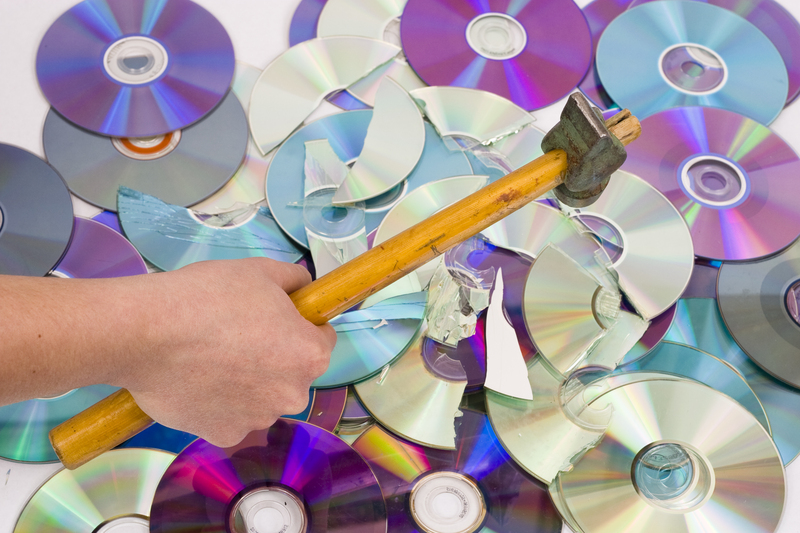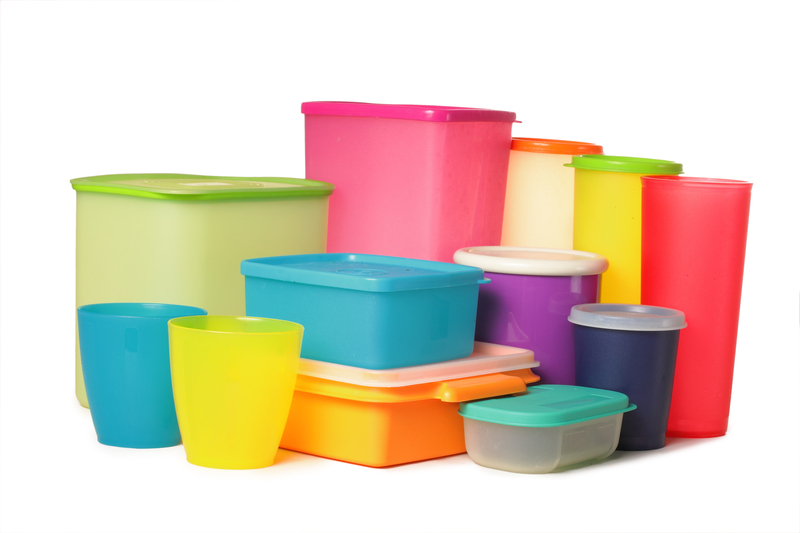Clearing Kitchen Clutter by Recycling Pots and Pans Properly
A clutter-free kitchen is not only visually appealing, but also a practical, safe, and healthy environment. Among the many culprits of kitchen mess, old pots and pans stand out as common contributors to kitchen clutter. If you've been wondering what to do with those battered frying pans or dented saucepans, you're not alone. In this comprehensive guide, we'll explore effective, eco-friendly strategies for clearing kitchen clutter by recycling pots and pans properly to ensure both a neat kitchen and a responsible ecological footprint.
Why It's Important to Recycle Pots and Pans
Many of us instinctively want to declutter kitchen cabinets by tossing out broken or unused cookware. However, improper disposal of cookware contributes to the global waste problem. Most pots and pans are constructed from recyclable metals such as aluminum, stainless steel, or cast iron--materials that should not end up in a landfill. Recycling cookware decreases the demand for raw materials, preserves natural resources, and reduces pollution.
- Environmental Benefits: Keeps metal waste out of landfills and reduces mining for new metals.
- Economic Value: Recycled metals are cheaper to process than newly extracted materials.
- Social Impact: Encourages sustainable living and sets a positive example for your community.

When to Declutter and Recycle Old Pots and Pans
Recognizing the right moment to say goodbye to cookware is key to an organized space. Consider recycling unwanted pots and pans when:
- The cookware is warped, cracked, or rusted.
- Teflon or nonstick surfaces are peeling or heavily scratched.
- Handles are loose, missing, or melted.
- You upgraded your set and have redundant pieces.
Regularly review your cookware inventory at least once a year, especially if you notice you're struggling to close cupboards or you simply have no need for certain pieces anymore.
The Best Ways to Recycle Old Pots and Pans
Recycling pots and pans properly involves understanding the materials and following correct procedures. Here are several eco-friendly ways to divert old cookware from the trash:
1. Metal Recycling Programs
Most pots and pans are crafted from stainless steel, aluminum, or copper. These metals are highly recyclable and accepted by many municipal recycling centers. However, rules vary, so check with your local waste management program to confirm their policies on recycling metal cookware. In most cases:
- Remove plastic, rubber, or wooden handles (if possible) before placing cookware in your recycling bin.
- If your local center doesn't accept them curbside, transport them to a scrap metal recycler.
- Group different metals together if you have many pieces, to ease the recycling process.
2. Household Hazardous Waste Events
Not all cookware is suitable for traditional recycling bins, especially those with nonstick coatings made of Teflon or other chemicals. Check your city's schedule for household hazardous waste collection days, where these tricky items might be accepted for responsible disposal or recycling.
3. Donation: Give Pots and Pans a Second Life
A huge part of kitchen clutter removal is realizing that some items, while no longer useful to you, might still be valuable to others. Consider donating gently used pots and pans to:
- Charity shops (Goodwill, Salvation Army)
- Community shelters or soup kitchens
- Local school home economics programs
- Online marketplaces (Facebook Marketplace, Craigslist, Freecycle)
*Note: Always clean and sanitize items before donating, and honestly assess whether they're still in safe, usable condition.
4. Upcycle and Repurpose Cookware
If you're creative, consider giving a new purpose to those old frying pans or saucepans! Upcycling is another responsible alternative to recycling pots and pans. Here are a few ideas:
- Plant flowerpots or herb gardens in old cookware
- Turn lids into quirky wall art or clock faces
- Use cast iron pans as rustic serving platters or trivets
- Repurpose as storage containers in your garage or craft room
How to Prepare Pots & Pans for Recycling
Properly preparing your cookware ensures that they are accepted by recycling facilities and repurposed efficiently. Here's how to get your old pots and pans ready for recycling:
- Clean thoroughly. Remove all food residue, grease, and grime using hot water, dish soap, and a good scrub.
- Detach handles and lids. Most recycling centers prefer metal only, so separate any plastic, wooden, or rubber parts.
- Stack by metal type. If you have stainless steel and aluminum, group them accordingly.
- Check for recycling symbols or manufacturer guidelines.
Special Considerations: Nonstick, Copper, and Cast Iron Cookware
Different cookware materials may require additional steps for recycling pots and pans properly:
- Nonstick Pans: Most centers can't accept Teflon-coated cookware unless the coating is completely removed. Check with the manufacturer or local facility. Some brands even offer take-back programs.
- Copper Cookware: Highly valued at scrap yards, copper pans can fetch a better rate if you remove any attached steel or other metals.
- Cast Iron: Hefty and durable, rusty or broken cast iron can be sent to scrap yards, melted down, and given new life as new metal products.
Common Mistakes to Avoid When Disposing of Cookware
- Putting pans directly in regular trash: This adds to landfill waste and squanders recyclable resources.
- Ignoring hazardous coatings: Some nonstick coatings should not be incinerated or landfilled due to toxic chemicals.
- Not removing non-metal components: Recycling facilities may reject items with plastic or wood attached.
- Donating broken or unsafe items: Only give away products that are still functional and safe for cooking.
The Role of Manufacturers in Recycling Pots and Pans
Many leading cookware brands are taking steps to help consumers with eco-friendly cookware disposal. Some offer recycling or take-back programs for their products, allowing you to send your old cookware back to the manufacturer for safe recycling. Look for information on their websites, or contact customer service for details.
Popular Brands with Cookware Take-Back Programs Include:
- Calphalon: Offers a mail-in program for used pots and pans, regardless of brand.
- TerraCycle: Partners with manufacturers to recycle nonstick pans and other hard-to-process materials.
- GreenPan: Provides eco-friendly recycling and upcycling suggestions on its website.
Eco-Friendly Alternatives: Buying Sustainable Pots and Pans
One of the best ways to prevent future clutter is to invest in quality cookware designed for longevity and recyclability. When replacing old pans, choose new items made from recyclable materials, with detachable components and minimal coatings. Some pointers:
- Seek out products with minimal, recyclable packaging.
- Prefer stainless steel, cast iron, or fully recyclable aluminum over heavily coated or blended products.
- Choose brands that clearly state their environmental policies and take-back programs.
- Buy only what you need--avoid unnecessary cookware that leads to new clutter.
The Circular Kitchen: Living Clutter-Free and Green
Creating a clutter-free and sustainable kitchen isn't a one-time project--it's a new habit that benefits both your home and the planet. Here are some lasting tips for keeping your kitchen organized while supporting recycling and waste reduction:
- Regularly review your kitchen tools and appliances, letting go of what is not needed.
- Purchase with intention: only buy new cookware when replacement is absolutely required.
- Store cookware efficiently by nesting similar items and using racks or organizers.
- Learn basic repair skills for tightening handles or re-seasoning cast iron, extending life before recycling.
- Share, donate, or swap excess kitchen items with neighbors or friends instead of sending them to landfill.

FAQ: Clearing Kitchen Clutter by Recycling Pots and Pans Properly
Can I put pots and pans in my curbside recycling bin?
Not always. Many municipal recycling programs do not accept pots and pans in curbside bins due to their size, mixed materials, or coatings. Check your local guidelines or take them directly to a scrap metal recycling center.
What should I do with nonstick pans with damaged coating?
Nonstick coatings like Teflon should not be disposed of in household trash due to environmental reasons. Search for hazardous waste drop-offs or check if the manufacturer offers a recycling program.
Can I scrap pots and pans for money?
Yes! Scrap metal recyclers often pay by the pound for aluminum, copper, stainless, and cast iron. Remove non-metal parts and call ahead for current prices.
Are there recycling symbols on pots and pans?
Some brands label their cookware with recycling symbols, but many do not. Contact the manufacturer or your local recycler if unsure.
Conclusion: Your Guide to a Cleaner, Greener Kitchen
Clearing kitchen clutter by recycling pots and pans properly is a rewarding, impactful step in fostering a tidy, organized, and sustainable home. By following the strategies above, you'll ensure that your unused cookware is given a new lease on life--either through metal recycling, creative upcycling, or charitable donation--rather than adding to landfill woes. Ultimately, your efforts contribute to a cleaner kitchen, a healthier planet, and a brighter future for all.
Take action today! Assess your kitchen, sort your cookware, and choose the most responsible path for disposing of your old pots and pans. Every item you recycle is a victory for both your home and the environment.
```